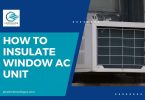Introduction
Insulating the underside of your roof offers numerous benefits, including reduced energy costs, lower carbon dioxide emissions, and prevention of mold growth. The right choice of ceiling insulation depends on the shape of your roof, and various options are available to suit different configurations. In this comprehensive guide, we explore the advantages of insulating your roof’s underside and delve into the best insulation for ceiling choices based on roof types.
Advantages of Roof Underside Insulation
Insulating the underside of the roof provides a range of advantages, such as:
1. Energy Cost Reduction:
– Effective insulation helps in regulating indoor temperatures, reducing the need for excessive heating or cooling and subsequently lowering energy costs.
2. Carbon Emission Reduction:
– By minimizing the reliance on heating and cooling systems, proper insulation contributes to a reduction in carbon dioxide emissions, promoting environmental sustainability.
3. Mold Prevention:
– Insulation helps control temperature and moisture levels, preventing the conditions conducive to mold growth and ensuring a healthier living environment.
Best Ceiling Insulation Based on Roof Shape
The shape of your roof determines the most suitable insulation option. Here are recommendations for various roof types:
1. Sloped Roof with Rear Ventilation:
– Ideal insulation options include fiberglass mats and rigid foam insulation. Additional framing may be necessary for deeper rafter bay installation.
2. Sloped Unventilated Ceiling:
– For this roof type, consider using spray foam in combination with fiberglass mats or rigid spray foam. These options effectively minimize temperature penetration into the roof.
3. Flat Ceiling:
– Common choices for flat ceilings include spray-on cellulose or fiberglass insulation. Proper airflow must be maintained by ensuring a minimum distance of 15 cm between the insulation and the roof.
How to Insulate a Flat Roof’s Ceiling: Step-by-Step Instructions
Safety Precautions:
– Wear safety equipment such as goggles, gloves, work shoes, and long-sleeved clothing.
– Turn off the main power to avoid electric shock.
– Wear a face mask or respirator to protect against dust.
Installation Steps:
1. Install Insulation in Tight Corners:
– Begin by installing insulation in tight corners along the edges, ensuring it is flush with the bottom edge of the ceiling.
2. Secure Insulation with Straps:
– Use straps to secure the insulation after applying it to the entire ceiling. Staple the straps to prevent the insulation from falling off.
3. Cut Batting Slightly Thicker:
– Cut each piece of batting slightly thicker than the gap in the quilt to ensure a snug fit. Use a suitable knife for precision.
Placing Polyethylene (PE) Between Roof and Insulation:
– Install polyethylene (PE) between the roof and insulation to enhance moisture control. Ensure proper ventilation to prevent moisture retention and mold growth.
Air Gap vs. Insulation:
– While air gaps and crevices contribute to protecting a home from rain and wind, insulation is preferable for its balanced properties. In certain areas, homes may not require thick insulation due to a reasonably wide air gap. However, insulation is recommended for dwellings in regions with adverse weather conditions.
Recommended R-Values for Ceilings:
– R30 to R49 for Zones 1 and 2.
– Zone 3: R30–R60.
– R38 to R60 for Zones 4 and 5.
– R49 to R60 for Zones 6 and 7.
Factors Affecting Insulation Performance:
– Environmental factors can impact the performance of insulation materials despite their high R-values. Manufacturers often test products in controlled environments, overlooking the unpredictability of changing weather.
Conclusion:
Choosing the best insulation for ceiling involves considering the shape of your roof and its ventilation requirements. Fiberglass mats, rigid foam, and spray foam are effective options depending on the roof structure. Insulating your roof’s underside provides benefits beyond energy efficiency, including mold prevention and enhanced comfort. Evaluate your roof type and insulation needs to make an informed decision for optimal results in maintaining a comfortable and energy-efficient home.
Disclosure: We may get commissions for purchases made through links in this post.








